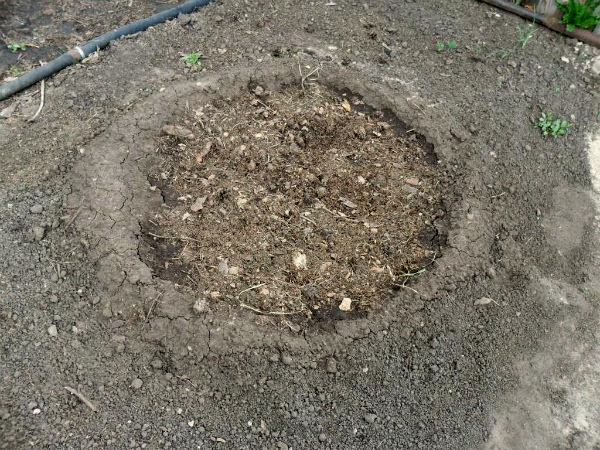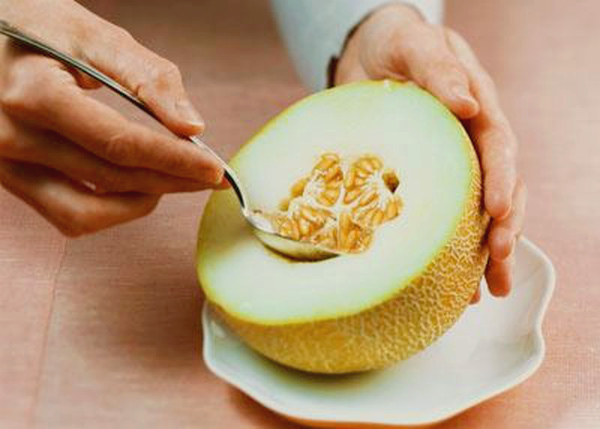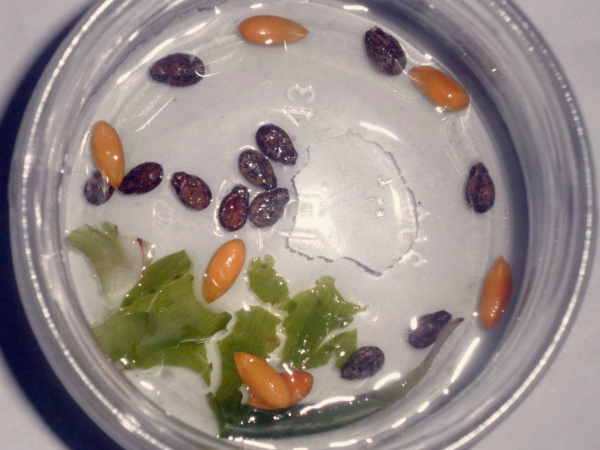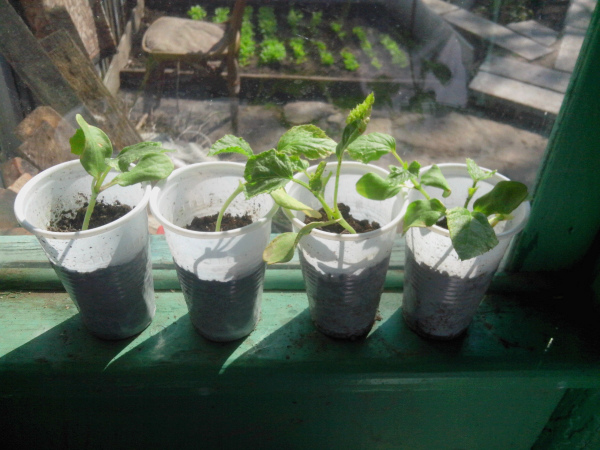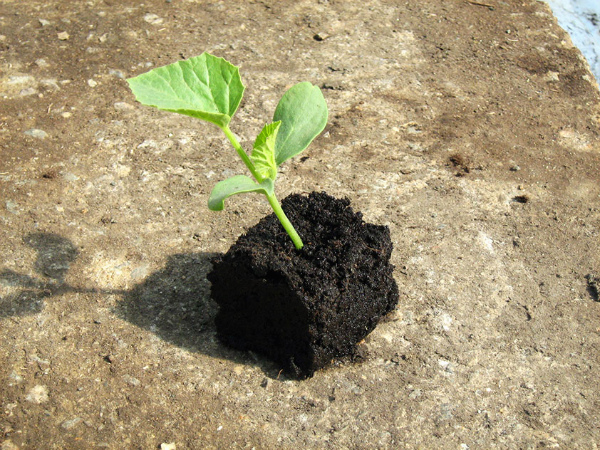Growing and caring for melons outdoors
Content
Site preparation
To answer the question "how to grow a melon", you need to figure out what she likes, what conditions are necessary for growth. And first of all, it is the choice and preparation of the site for planting.
Despite the fact that most varieties are resistant to low temperatures, it is still better to plant the crop in a sunny place. In this case, it is desirable that there is no strong wind or draft. Another important element of preparation is the composition of the soil in the garden. Melon grows well in fertile, structured soils. You will need a loamy calcareous or suspended soil with a high content of organic and mineral elements, but with neutral acidity. To unleash the vegetative potential of a melon, it is important to choose the right crops: clover, herbs, potatoes, cabbage, cereals, onions, garlic.
Preparatory work in the garden is carried out in two stages. First, in the fall, they dig up a site on a shovel bayonet, and then add humus or compost (at least 3 kg per 1 sq. M.). In clay areas, cleaned river sand is also introduced - not less than ½ a bucket for each square meter. Then they dig it up again and leave it until spring. In the spring, the digging is repeated, however, nitrogen and potassium fertilizers are added to the humus. Immediately before planting, nitrogen is added again, but now in combination with phosphate.
It is also recommended to mark the holes in the garden in advance to save time when planting. Between the holes there should be at least 60 cm of distance, and it is recommended to leave 100-130 cm between the rows. This will help, firstly, to facilitate the care of the plantings, and, secondly, will give the plant a lot of free space for growth.
Selection and preparation of seeds for planting
The choice of seeds, that is, the selection of a well-zoned variety that can grow well in your garden, can be called almost the most important stage in working with seed. Bad seeds won't grow.
Speaking about the technical characteristics of seeds, it should be noted that the best yield is shown by seeds that are 2-3 years old. It is they who give a large number of female flowers, which means that you will have much more ovaries than from the seeds of the same year, which for the most part give male flowers. Seeds from different years can be mixed to provide flowers for both sexes and to obtain better pollination.
After the seeds are calibrated (usually large seeds are taken), they should be checked for germination and discarded empty. To do this, knead a 5% sodium chloride solution and dip the seeds into it for about 3 hours. The water that has surfaced is empty and not suitable for landing. But those that have safely settled to the bottom should be rinsed under running water and wrapped in a damp cloth.
Further preparation is easy at home.The seed is soaked for 25 minutes in a weak solution of potassium permanganate (10 g of potassium permanganate is dissolved in 1 liter of water) to disinfect. If it seems to you that this is not a very reliable method, you can use a soda solution (2 g of soda is dissolved in 1 glass of warm water) and place the seeds in it for 11-13 hours. In addition to disinfecting, such soaking helps the seeds to swell and prepare for active growth.
An optional but nevertheless useful method of preparing seeds before planting at home is to soak them in an ash solution. Stir 1 teaspoon of wood ash in 1 glass of warm water, and then lower the seeds wrapped in cloth for 12 hours. Wood ash saturates them with a complex of nutrients, significantly accelerating the subsequent growing season and caring for plants in the garden.
We grow seedlings
Since in most regions of Belarus there are no suitable conditions for planting seeds directly in the garden, seedlings are grown first.
Pre-prepared and processed seeds are planted in peat tablets and pots. This method of planting facilitates the care of the seedlings and their subsequent transplantation into open ground. In addition, it is quite convenient to place them on the balcony at home during the growing of seedlings. The main thing is that the diameter of the landing container is at least 10 cm.
The soil for planting is mixed from peat, sand and humus, moistened before inserting seeds. By the way, they need to be planted 3-4 pieces in each glass to increase germination. In the future, weak shoots can be removed, leaving only the strongest for growth. After planting, mulch with dry sand or earth.
It usually takes about 30 days to grow seedlings. All this time, it is very important to monitor the air temperature on the balcony or at home, depending on where you placed the pots. The temperature favorable for growth is about +20 ºС. The abundance of light is also important, so if there is not enough light on the balcony, install fluorescent lamps and light up the sprouts so that they grow well. After the appearance of the second true leaf, the seedlings are pinched to stimulate the development of shoots.
In fact, caring for seedlings is not difficult. In addition to light and heat, the plant needs regular watering, no drafts on the balcony and top dressing. Superphosphate, saltpeter and potassium are used as top dressing, as the earliest provision of good ovaries.
Seeds are planted on the balcony in mid-April to start growing melons in the garden in mid-May.
Video "Sowing melons for seedlings"
This video will tell you about the technology of sowing melon seeds for growing seedlings at home.
Melon planting in the ground
In Belarus, favorable weather for planting is established in mid-May. If you have outlined the holes in advance, then planting in open ground in the country will be quick.
Carefully separate the bottoms from the peat pots to allow the melon roots to grow easily. Place humus on the bottom of the hole and moisten it a little, then place the peas with a seedling and carefully cover it with earth. It is important not to deepen the stem into the ground. The wells are watered again and then mulched with dry soil.
If you are not sure that the temperature will not drop below +15 ºС at night, then cover the area with a film. You can make a wooden frame at home and stretch a film over it for easy installation. Moreover, it is not necessary to constantly hold such a structure above the plantings, since it is quite warm in the garden during the day, so you can leave the shelter at home until night.
Melon varieties
Usually, European varieties of melons are sown on the territory of Belarus: Aikido F1, Wanda F1, Caramel F1, Roksolana F1. The fact is that these are varieties with a short growing season - up to 70 days. Nevertheless, it is possible to plant varieties that have taken root in central and northern Russia. These include: Altai with a vegetation period of 80 days, Blondi with a vegetation period of 85 days.Pumpkins of these varieties grow up to 1 kg in weight, while they are distinguished by good keeping quality and rich sweet taste. It should be noted that these are hybrid varieties, which means that their immunity to diseases and infections is higher than that of ordinary members of the Pumpkin family.
You may also be interested in the following varieties suitable for growing melons in a country house in Belarus:
- Alushta, which ripens in 70-75 days, and bears fruit with pumpkins weighing up to 1.5 kg with sweet pulp;
- Dessert 5, the growing season of which lasts 70-80 days, ends with the formation of pumpkins up to 1.6 kg with sweet, tender pulp;
- A collective farmer, her growing season takes up to 90 days, pumpkins are small, weighing up to 1 kg, very sweet.
Melon care
There is no reason to believe that caring for melons in the country is difficult. Given the rather favorable climate for most hybrid varieties in Belarus, fragrant and sweet melons will appear in your garden pretty soon. You just should not forget about the simple rules for caring for the plantings, and everything will go smoothly.
Loosening
Loosening of the holes can be carried out to a depth of no more than 15 cm. Why is this? The fact is that the melon has a developed root system, which is located close to the soil surface and you can damage it.
The first loosening of the holes and row spacings takes place at these same 15 cm, but the second is only 10 cm deep and only in the row spacing. After the formation of lateral shoots, the care consists in hilling the plants - gently shovel the earth to the stem to form a roller.
Watering
Watering in the garden where the melons are grown should be regular, but not fanatical. Be sure to keep the water warm and not spill directly onto the stems and leaves.
The water on the melon should not stagnate, therefore, when choosing a site in the country, give preference to something that is on a hill or well-drained.
Shortly before the formation of ovaries, watering is stopped in order to stimulate the melon to the rapid development of fruits.
Topping
Pinching is the next item in the melon care program in the country. After the first pinching of the seedlings, the next one does not take place earlier than the 5th real leaf is formed. It is better to wait until the 7th real leaf is formed on the main stem, and then pinch over it. This stimulates the development of lateral shoots and ovaries. After the side lashes grow, they are also pinched, and then 2-3 fruits are left on each.
Top dressing
Melon care in the garden of any region of Belarus cannot do without feeding. For the first time, the plant is fed 2 weeks after transplanting into open ground. Use saltpeter, infusion of bird droppings or mullein. The next dressings are carried out every 10 days until the beginning of fruiting. They also use complex preparations and dilute them in accordance with the instructions.
Video "Secrets of Melon Growing"
This video shows how melons are grown in the open field in a dacha near Moscow.

